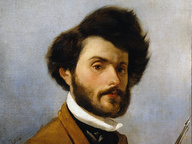Christian Boltanski. Dopo

Christian Boltanski, L'hotel des immigrants
From 3 November 2015 to 31 January 2016
Turin
Place: Fondazione Merz
Address: via Limone 24
Times: Tuesday-Sunday 11 am-7 pm
Responsibles: Claudia Gioia
Ticket price: € 5 adults, € 3,50 concessions (students, organized groups of 10 or more) Free: children under 10, senior citizens, people with disabilities and their attendant, every first Sunday of the month
Telefono per informazioni: +39 011.19719437
E-Mail info: info@fondazionemerz.org
Official site: http://www.fondazionemerz.org
From November 3, 2015, the Fondazione Merz presents Christian Boltanski. Dopo, a solo exhibition of the French artist’s work, curated by Claudia Gioia.
Christian Boltanski (Paris, 1944), one of the great interpreters of contemporary life, displays his work for the first time in Turin with a new, site-specific project inspired by the city’s social and cultural history. The exhibit unfolds inside the Fondazione gallery spaces and is conceived as a total installation, a choral narrative addressing individual and collective memory, entwining the past with the present, urging unattended promises, recombining History with each individual’s life.
Boltanski’s subject matters are History and life duration. Vulnerability is his strength, and reflecting upon absence is his way to express his passion for what is real. And so Boltanski builds his own archives, moves shadows around the gallery space, or brings forgotten memories back to the surface through the eyes and faces of strangers that emerge from found photographs; he synchronizes the sound of the human heartbeat to the rhythm of history; he creates settings with old clothing so that individual stories may not be dispersed; he investigates fate and challenges, through irony, the transience of things to propose the art of time.
The exhibition path starts off with a significant installation consisting of about 200 large-scale photographs printed on fabric. Hanging from the ceiling and moving around the gallery space, they portray faces and images of everyday life taken from Boltanski’s personal archive, which he built through the years and where stories are condensed into a look, a portrait, a snap shot. The constant movement created by the suspended images is an invitation to let oneself go with the flow of time and memory. What happens afterwards? And how many afterwards are already there in people’s lives, in their recollections and fortuitous past events? The photographs fly around like facts of life. Visitors can decide whether to just look at them or physically move after them, but eventually they will have to let them go, and think of what will happen next.
A series of quick sequences—life flashbacks, from young age to adult age—also linger on Boltanski’s face Entre Temps. His photographs lend themselves to the game of time going by, as memories change and shrink until they become shadows. Shadows that appear unexpectedly, like quivering slender shapes stretch out on the walls evoking presences that linger between dream and reality, in a game where the playful aspect is combined with anxiety, illusion and deceit.
Like the photographs, these shadows put emphasis on human transience, on the effort to hold onto what is fleeing, insisting especially on man’s personal involvement in this collective narrative called life, history, thought.
In the video Clapping Hands, a liberating applause accompanies visitors as they head down to the lower floor of the Fondazione. This is Christian Boltanski’s tribute to Mario Merz’s work and the ability to be present in one’s own time, nurturing it and making it fruitful for those who will come next.
The exhibition path ends with two important installations.
The gallery space is filled with cellophane-covered cardboard boxes piled one on top of the other to create different constructions of different sizes: unstable towers, fragmented archives – an evolution of the boites de biscuits Boltanski is so fond of – lie on the floor as if forgotten there, only slightly illuminated by the light bulbs that create the word DOPO in the dark.
Memory is right there and, like a brain circuit, it only awaits to be reactivated by opening drawers, looking into everyday life stories and playing with references to the present time. Accompanying the exhibition is a publication featuring images of Christian Boltanski’s works and installations displayed at the Fondazione Merz, the curator’s interview with the artist, and an essay by philosopher Massimo Donà.
The exhibition is organized with the support of the Fondazione CRT.
Thanks to Kunh & Bülow and DUPARC Contemporary Suites.
Christian Boltanski, French conceptual artist (Paris 1944). After experimenting with painting, he started investigating collective and individual memory with the short film La vie impossible de Christian Boltanski (1968). He creates assemblages and installations working with photography, fragmenting reality and imagination, amassing different materials and objects. His 1970s works (Vitrines de référence; Boîtes de biscuits; Tiroirs; L'album de photographies de la famille D. entre 1939 et 1954; etc.) are followed by installations that increasingly focus on being a testimony to past human experiences and the absence-presence of memory bits to be followed and reinterpreted. Archives, Monuments, Réserves present, with site-specific variations and adaptations, photographs combined with piled boxes, illuminated walls, stacks of clothes.
Christian Boltanski participated in Documenta V (1972), VI (1977), and VIII (1987), the 54th and 56th Venice Biennale. He had important solo shows at: Centre Georges Pompidou Paris (1984); Museum of Contemporary Art in Chicago and Los Angeles (1988), Whitechapel Art Gallery, London (1990). Recently he exhibited his work at: Kunstmuseum Wolfsburg, Germany (2013), Park Avenue Armory, New York (2010), Monumenta Grand Palais Paris (2010), Serpentine Gallery London (2010). He was awarded the Créateurs sans frontières, Cultures France (ex AFAA) (2007); Praemium Imperiale, Japan Art Association (2007) and Generalitat Valenciana’s International Julio González Prize (2015).
Christian Boltanski (Paris, 1944), one of the great interpreters of contemporary life, displays his work for the first time in Turin with a new, site-specific project inspired by the city’s social and cultural history. The exhibit unfolds inside the Fondazione gallery spaces and is conceived as a total installation, a choral narrative addressing individual and collective memory, entwining the past with the present, urging unattended promises, recombining History with each individual’s life.
Boltanski’s subject matters are History and life duration. Vulnerability is his strength, and reflecting upon absence is his way to express his passion for what is real. And so Boltanski builds his own archives, moves shadows around the gallery space, or brings forgotten memories back to the surface through the eyes and faces of strangers that emerge from found photographs; he synchronizes the sound of the human heartbeat to the rhythm of history; he creates settings with old clothing so that individual stories may not be dispersed; he investigates fate and challenges, through irony, the transience of things to propose the art of time.
The exhibition path starts off with a significant installation consisting of about 200 large-scale photographs printed on fabric. Hanging from the ceiling and moving around the gallery space, they portray faces and images of everyday life taken from Boltanski’s personal archive, which he built through the years and where stories are condensed into a look, a portrait, a snap shot. The constant movement created by the suspended images is an invitation to let oneself go with the flow of time and memory. What happens afterwards? And how many afterwards are already there in people’s lives, in their recollections and fortuitous past events? The photographs fly around like facts of life. Visitors can decide whether to just look at them or physically move after them, but eventually they will have to let them go, and think of what will happen next.
A series of quick sequences—life flashbacks, from young age to adult age—also linger on Boltanski’s face Entre Temps. His photographs lend themselves to the game of time going by, as memories change and shrink until they become shadows. Shadows that appear unexpectedly, like quivering slender shapes stretch out on the walls evoking presences that linger between dream and reality, in a game where the playful aspect is combined with anxiety, illusion and deceit.
Like the photographs, these shadows put emphasis on human transience, on the effort to hold onto what is fleeing, insisting especially on man’s personal involvement in this collective narrative called life, history, thought.
In the video Clapping Hands, a liberating applause accompanies visitors as they head down to the lower floor of the Fondazione. This is Christian Boltanski’s tribute to Mario Merz’s work and the ability to be present in one’s own time, nurturing it and making it fruitful for those who will come next.
The exhibition path ends with two important installations.
The gallery space is filled with cellophane-covered cardboard boxes piled one on top of the other to create different constructions of different sizes: unstable towers, fragmented archives – an evolution of the boites de biscuits Boltanski is so fond of – lie on the floor as if forgotten there, only slightly illuminated by the light bulbs that create the word DOPO in the dark.
Memory is right there and, like a brain circuit, it only awaits to be reactivated by opening drawers, looking into everyday life stories and playing with references to the present time. Accompanying the exhibition is a publication featuring images of Christian Boltanski’s works and installations displayed at the Fondazione Merz, the curator’s interview with the artist, and an essay by philosopher Massimo Donà.
The exhibition is organized with the support of the Fondazione CRT.
Thanks to Kunh & Bülow and DUPARC Contemporary Suites.
Christian Boltanski, French conceptual artist (Paris 1944). After experimenting with painting, he started investigating collective and individual memory with the short film La vie impossible de Christian Boltanski (1968). He creates assemblages and installations working with photography, fragmenting reality and imagination, amassing different materials and objects. His 1970s works (Vitrines de référence; Boîtes de biscuits; Tiroirs; L'album de photographies de la famille D. entre 1939 et 1954; etc.) are followed by installations that increasingly focus on being a testimony to past human experiences and the absence-presence of memory bits to be followed and reinterpreted. Archives, Monuments, Réserves present, with site-specific variations and adaptations, photographs combined with piled boxes, illuminated walls, stacks of clothes.
Christian Boltanski participated in Documenta V (1972), VI (1977), and VIII (1987), the 54th and 56th Venice Biennale. He had important solo shows at: Centre Georges Pompidou Paris (1984); Museum of Contemporary Art in Chicago and Los Angeles (1988), Whitechapel Art Gallery, London (1990). Recently he exhibited his work at: Kunstmuseum Wolfsburg, Germany (2013), Park Avenue Armory, New York (2010), Monumenta Grand Palais Paris (2010), Serpentine Gallery London (2010). He was awarded the Créateurs sans frontières, Cultures France (ex AFAA) (2007); Praemium Imperiale, Japan Art Association (2007) and Generalitat Valenciana’s International Julio González Prize (2015).
SCARICA IL COMUNICATO IN PDF
COMMENTI

-
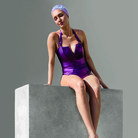 Dal 4 July 2025 al 21 September 2025
Roma | Palazzo Bonaparte
Dal 4 July 2025 al 21 September 2025
Roma | Palazzo Bonaparte
-
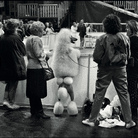 Dal 28 June 2025 al 21 September 2025
Roma | Palazzo Bonaparte
Dal 28 June 2025 al 21 September 2025
Roma | Palazzo Bonaparte
-
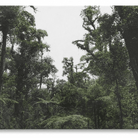 Dal 24 June 2025 al 29 October 2025
Firenze | Museo Novecento
Dal 24 June 2025 al 29 October 2025
Firenze | Museo Novecento
-
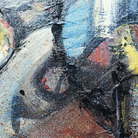 Dal 26 June 2025 al 18 July 2025
Firenze | Palazzo Sacrati Strozzi
Dal 26 June 2025 al 18 July 2025
Firenze | Palazzo Sacrati Strozzi
-
 Dal 26 June 2025 al 28 September 2025
Roma | Vittoriano - Sala Zanardelli
Dal 26 June 2025 al 28 September 2025
Roma | Vittoriano - Sala Zanardelli
-
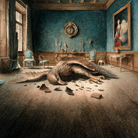 Dal 25 June 2025 al 26 October 2025
Bergamo | GAMeC
Dal 25 June 2025 al 26 October 2025
Bergamo | GAMeC
